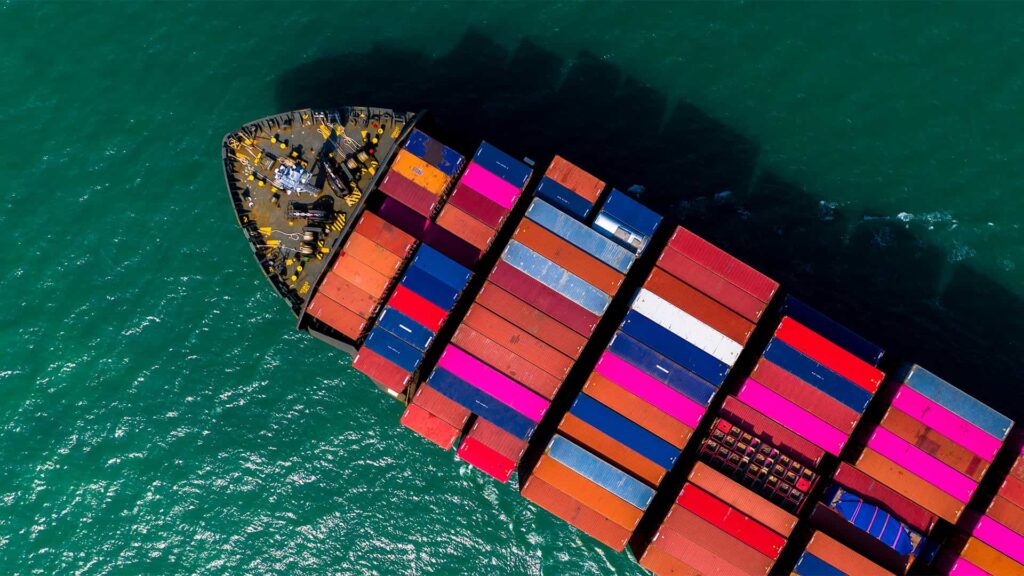Sea freight – Six months is a long time
In this article, we look back at the last six months in the containerised sea freight market and also ahead to the next six.
As the title suggests, six months is a long time, particularly when reviewing developments which have taken place in recent months. In early December 2023, spot rates had fallen to such low levels that some contracts were being renegotiated for carriers to safeguard volumes and avoid shippers simply moving to the spot market.
The developments in the Red Sea in December, culminating in the redirection of Asia to Europe services via the Cape of Good Hope, led to carriers to implement surcharges. These surcharges were often introduced with little or no notice and often in breach of contract terms. Whilst conceptually justified, there was very little, if any, transparency in terms of the basis for their calculation. The balance of power had clearly shifted. Often left with little or no choice, shippers would frequently be forced to either negotiate (often unsuccessfully) or pay the requested charges in full in order guarantee space to move their goods.
Carriers explanations referenced the need to make longer-term decisions to safeguard network reliability and resilience. It’s clear that carriers went, and continue, to go to great lengths to charter vessels, buy and lease containers and redeploy tonnage between routes in order to compensate for the additional transit time required to re-route services. The concern was and remains the uncertainty as to how long this will continue.
Carriers were clearly cautious that they could continue to incur costs long after they hoped the threat would recede allowing transits through the Red Sea to resume. However, there is still currently no clear indication when this will be happening. Shippers and carriers generally do not want to have to look to legal remedies, examples of TCC (The Containership Company) and Home Retail Group probably being the exception and based on their own particular circumstances. They would rather resolve matters commercially, although this can often set a precedent for future shifts in rates and the market away from the contracted positions they have agreed.
In early 2024 spot rates started to firm up, although it was not certain that this development would continue much beyond Chinese New Year. Many shippers took the decision to delay their tender processes and ultimately take a ‘wait and see’ approach, delaying the announcement of awards to carriers for contract year 2024–25. Some shippers also deferred the traditional start of their Asia-Europe contract year from 1 April to later dates to try and obtain a better feel of the market. However, in this time, the market firmed and has continue to do so.
Fast forward to the current day and we find ourselves in a situation where many identify the Red Sea crisis as an effective bailout from the overcapacity, which would have otherwise plagued the market in 2024. Effective capacity in many trades has reduced as newbuilding deliveries have been soaked up through longer transit times, port congestion and/or carriers redeploying tonnage between trades to counter these factors.
Whilst parallels have been drawn between the current situation and that faced in 2022 as a result of COVID, there are nevertheless important differences. Whilst strong demand was common in both cases, then it was often driven by Government stimulus packages but the current economic situation is now very different as we ‘pay’ for those times. Many believe the strong demand currently seen is due to either restocking or shippers moving their goods early due to longer transit times and the greater uncertainties arising as a result of these. There is a lot of uncertainty as to whether the traditional peak season will continue throughout the summer month as usual. Space is now at a premium from Asia to Europe and carriers are literally seeking a premium in order to move shippers’ goods, contract or no contract.
Another parallel with 2022 is port congestion which has recently started hitting the headlines again. This has largely been driven as a result of network changes with changes in transhipment patterns arising as a result of the Red Sea crisis. There is currently port congestion in some ports in Asia, the Middle East and Western Mediterranean. The impacts felt will likely have a knock-on effect with ports in Northern Europe subsequently suffering from vessel bunching.
Some commentators are suggesting there may be some modal shift to air in the coming weeks, particularly for LCL shipments, as the difference between air freight rates and sea freight rates narrows. We are now once again, seeing carriers not honouring contracts and seeking additional surcharges from shippers under whatever acronyms these may be. Some carriers have also openly notified the market they would be seeking general rate increases on 1 and/or 15 June whilst other carriers have recently announced either new or revised higher levels of surcharges.
Analysts and investors have said that many carriers’ financial forecasts for 2024 were far too conservatives. It is evident now from revised income and profit forecasts announced by many carriers that this was indeed the case. Interesting to see ‘passive’ reports of this being due to additional increases in freight rates. Whilst it is evident that costs have been increasing in order to justify the levying of surcharges, these have in many cases exceeded the actual costs incurred and therefore boosted carrier profitability.
If the current situation is not sustained through the summer and into the later months of the year, there will likely be a quick market correction. An additional 1 million TEU of new capacity was added in the first four months of 2024 and the further 2 million TEU of new capacity is slated for delivery in the remaining months of this year. Production order indices are showing signs of weaking too so demand is also uncertain. Many analysts have stated that spot rates could ‘normalise’ very quickly. It will be interesting to see if the balance of power shifts back somewhat to shippers in the next six months albeit not necessarily to where they were in early December 2023.
It is clear that in an increasingly volatile market environment, where external factors are playing a significant impact on supply and demand for sea freight capacity, contracts will inevitably come under increasing stress. Whilst it’s open to parties to negotiate whether obligations are absolute, reasonable endeavours, best endeavours, or otherwise, this will only matter in circumstances where they are prepared to leverage both their commercial and legal positions to protect their interests and ultimately their supply chains in the case of shippers. The only certain thing is that we continue to live in an uncertain world.










